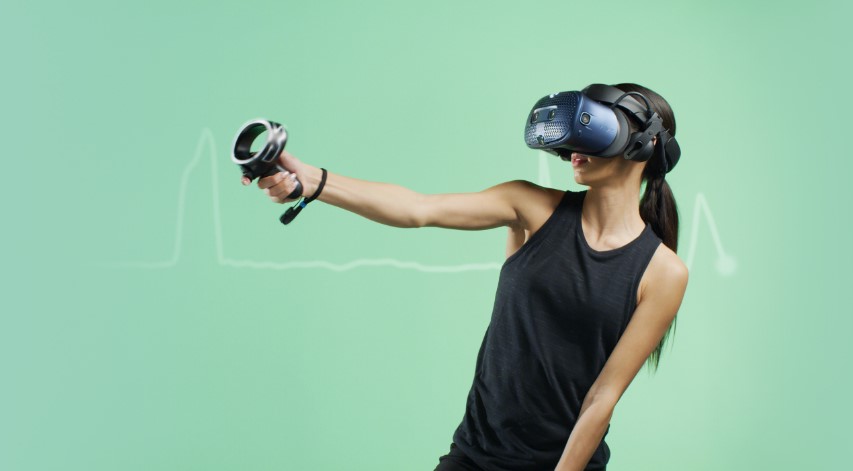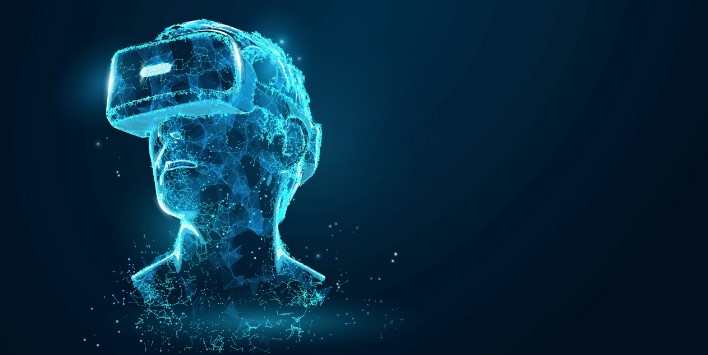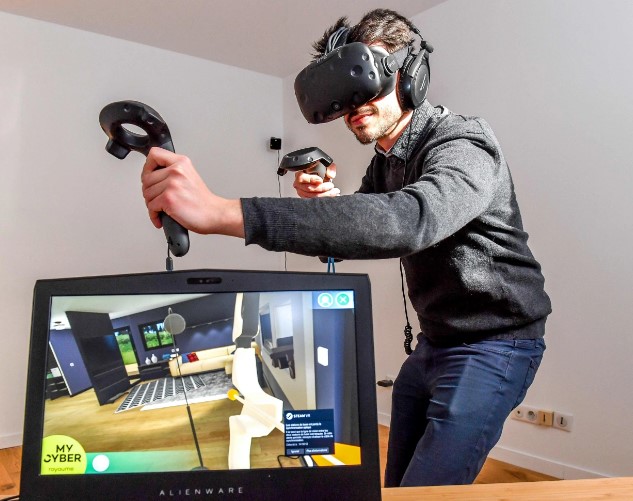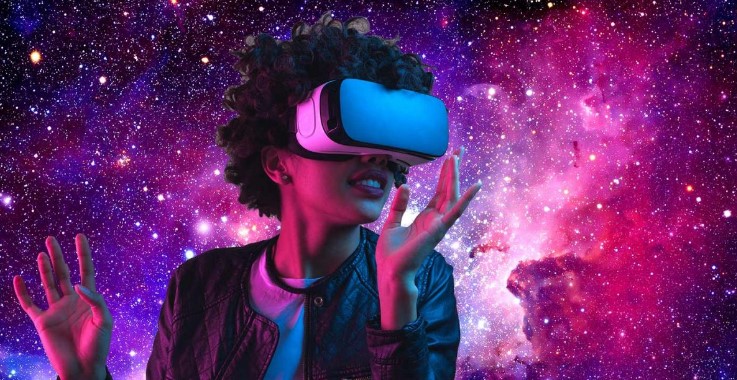You’ve probably donned a virtual reality (VR) headset at least once, marveling at how lifelike the virtual world can seem. VR has indeed become a revolutionary technology, transforming numerous sectors such as gaming, education, and healthcare. However, have you ever wondered why VR relies on slightly different views for each eye? It’s an intricate dance of stereoscopic vision, binocular disparity, and depth perception, all to provide you with the most immersive and authentic experience possible. In this article we will discuss about “Why Does Virtual Reality Rely on Slightly Different Views for Each Eye?” in detail. So, keep reading till the last paragraph for understanding about the topic.
How Does Virtual Reality Create a 3D Effect?

Virtual reality simulates a three-dimensional environment using a process called stereoscopic projection. This technique provides a different image to each eye, mimicking the way human vision works in real life. The two images are slightly offset to create a parallax effect, which gives the illusion of depth and distance, bringing the VR environment to life.
The 3D effect is achieved by rendering two images from slightly different perspectives, reflecting the way our eyes naturally perceive the world due to their horizontal separation. This separation, known as the interpupillary distance, is crucial to consider when creating VR content. The correct adjustment of this distance enhances the depth perception and thus, the immersion of the user into the virtual world.
What is the Purpose of Using Different Views for Each Eye in Virtual Reality?

The answer lies in our inherent visual perception mechanism: binocular vision. Humans possess two eyes, slightly offset horizontally. This arrangement allows each eye to view the world from a slightly different angle. The brain fuses these two images to produce a single, unified vision with a sense of depth—a phenomenon known as binocular disparity.
Virtual reality leverages this mechanism by providing each eye with a slightly different view. This creates an effective binocular disparity in the VR environment, convincing your brain that the virtual world around you has tangible depth and volume.
How Does Binocular Disparity Contribute to the Immersive Experience in VR?

Binocular disparity is a cornerstone of creating a believable, immersive experience in VR. By mirroring the natural human vision process, VR tricks your brain into accepting the virtual environment as real. The result is an unparalleled level of visual immersion that can transport you to new worlds without leaving your living room.
Can Virtual Reality Work Without Providing Different Views for Each Eye?

While binocular VR headsets dominate the market, monoscopic VR, where the same image is presented to both eyes, does exist. However, monoscopic VR lacks the depth cues that come from binocular disparity, making the environment seem flat and less immersive.
In contrast, a binocular VR system, with its slightly different views for each eye, convincingly simulates depth, creating a more engrossing experience. Thus, while monoscopic VR has its uses—especially in mobile VR experiences—the immersive potential of binocular VR is far superior.
What is the Role of Stereoscopic Vision in Virtual Reality?

Stereoscopic vision—the ability to perceive depth—is a critical factor in virtual reality. It helps distinguish VR from traditional 2D digital experiences by creating a sense of three-dimensional space. This spatial recognition is essential for the immersive experiences VR is famous for, be it exploring a dungeon in a VR game or touring a virtual representation of a historical site.
How Do Head-Mounted Displays Simulate Depth Perception in VR?
Head-mounted displays (HMD)s, the most common type of VR device, are engineered to simulate depth perception effectively. HMDs contain two small screens, one for each eye, which display slightly different, stereo images. These stereo images, along with the clever use of lenses, create a convincing depth of field. Furthermore, HMDs use sensor technology to track your head movement, adjusting the VR environment in real-time. This interactivity adds another layer of immersion, making you feel truly ‘inside’ the virtual world.
What Are the Advantages of Using Eye Tracking Technology in Virtual Reality?

Eye tracking is an emerging technology in VR that holds great promise. It monitors your eye movements and adjusts the VR environment accordingly. This capability can significantly enhance the VR experience in several ways. For instance, it allows for more natural interactions within the VR world, such as making eye contact with a virtual character. It can also enhance the visual quality of the VR experience by implementing a technique called foveated rendering, which sharpens the image at the point where you’re looking and blurs the periphery, much like human vision.
How Does Virtual Reality Account for Individual Differences in Interpupillary Distance?
Given the varying interpupillary distance (the distance between your pupils) across individuals, VR devices often include an option to adjust this parameter. This adjustment ensures that the VR experience feels comfortable and natural, regardless of your eye characteristics. A properly set interpupillary distance enhances the 3D effect and helps prevent symptoms like dizziness or eye strain, which some users may experience.
What Are the Challenges in Achieving Accurate Eye Views in Virtual Reality?
Designing a compelling and comfortable VR experience requires a delicate balance of technical and physiological considerations. Misalignments or inconsistencies in the stereoscopic images can lead to discomfort or even motion sickness in the user. Furthermore, accurately representing depth and distance, especially in more complex scenes, remains a challenging task. Advances in technology and a better understanding of human vision and perception are continually helping us refine and enhance the VR experience.
How Does the Parallax Effect Enhance the Sense of Depth in VR?
The parallax effect is another tool in the VR toolkit to simulate depth. This effect, a result of binocular vision, is the apparent motion of objects caused by changing viewing position. In a VR environment, the parallax effect gives a sense of three-dimensionality, making the experience more immersive and realistic.
Indeed, the magic of virtual reality lies in its ability to leverage our natural visual processes, creating compelling virtual environments that feel remarkably lifelike. So, next time you put on a VR headset, take a moment to appreciate the sophisticated technology and intricate knowledge of human perception that comes together to create your VR experience. The virtual world awaits your exploration!
Harnessing the Power of Stereoscopy: The Backbone of VR Experience
So far, we’ve unlocked the basic understanding of why virtual reality relies on slightly different views for each eye, a principle that is rooted in the mechanics of human vision. But as we dive deeper, it’s essential to understand how developers and VR technologists translate these complex vision processes into the virtual reality experiences we love and enjoy.
The Art of 3D Rendering in Virtual Reality
3D rendering is the process by which a computer translates information from a 3D model into a 2D image. In VR, this process is instrumental in creating the realistic environments that envelop the user. By utilizing advanced shading, texturing, and lighting techniques, developers can render intricate virtual worlds that captivate users and fuel their sense of exploration.
The process of 3D rendering in VR goes one step further by providing each eye with a slightly different perspective of the 3D model. This concept, called stereo rendering, is key to creating the depth and volume that make the VR environment feel tangible.
Stereoscopic Vision vs. Monoscopic Vision in VR
While we’ve touched on the differences between stereoscopic and monoscopic VR, it’s worth noting that each has its place. Stereoscopic VR, with its immersive depth and volume, is a clear choice for applications that require a full sense of presence, such as VR gaming or virtual tourism. On the other hand, monoscopic VR, though lacking in depth perception, is still valuable in situations where portability and accessibility are paramount, such as 360° video viewing on mobile devices.
The Evolution of Head-Mounted Displays and Eye Views in VR
From the rudimentary VR goggles of the early 90s to the sophisticated headsets of today like the Oculus Rift, the evolution of head-mounted displays (HMDs) is a testament to our growing understanding of human vision and how to simulate it effectively.
Modern HMDs are finely tuned to provide optimal stereoscopic views for each eye, taking into account factors such as interpupillary distance and the user’s focus distance. These advancements ensure a comfortable and immersive experience for a wide range of users.
Oculus Rift and Eye Perspective in VR
The Oculus Rift, one of the trailblazers in VR technology, has set a benchmark for delivering high-quality, immersive VR experiences. By providing individually rendered images for each eye with the right binocular disparity, the Oculus Rift offers users a convincing sense of depth and presence in the virtual environment. This, coupled with precise head-tracking technology, results in a highly immersive VR experience.
Moreover, the Oculus Rift includes an adjustable interpupillary distance, catering to a wide range of users. The device also employs advanced eye-tracking technology in its later models, paving the way for more interactive and personalized VR experiences.
Eye-tracking in VR: A Window to User Intent
Eye-tracking technology in VR not only allows for more realistic rendering and interaction but can also provide invaluable insights into user intent and behavior. For instance, VR applications can use eye-tracking data to understand what elements in the environment are attracting the user’s attention, informing design decisions and improving user engagement. In therapeutic applications, eye tracking can help monitor patient progress or detect symptoms of certain conditions, like attention deficit disorders.
Moreover, by studying a user’s gaze patterns, VR systems can even learn to predict where the user is likely to look next, improving rendering efficiency and performance.
Also Read: Jack Dempsey Needle Art: A Detailed Overview and News
Final Words: Why Does Virtual Reality Rely on Slightly Different Views for Each Eye?
The power of VR lies in its ability to convincingly replicate and extend our experience of reality. And the stereoscopic presentation, providing slightly different views for each eye, is the key to creating this immersive illusion. As we look towards the future, it’s evident that the capabilities of VR are expanding at an exponential rate.
Emerging technologies like advanced eye-tracking, higher resolution displays, wider field of view, and haptic feedback devices are set to further enhance the VR experience. We can also expect more personalized VR content, thanks to machine learning algorithms that adapt the experience to the user’s preferences and behavior.
Moreover, as VR technology becomes more accessible, we’re likely to see its impact grow in various sectors. In education, VR can provide immersive learning experiences that improve comprehension and retention. In healthcare, VR therapies can help treat a range of conditions from phobias to post-traumatic stress disorder. In entertainment, VR will continue to redefine gaming and storytelling, offering more engaging and interactive experiences.
As we navigate this exciting landscape, one thing is clear: the magic of VR stems from our understanding of human vision and our ability to translate it into technology. It’s a testament to our ingenuity, an ode to our innate curiosity, and a promising sign of the immersive experiences yet to come.
So, strap on your VR headset, and get ready to explore these new worlds. The future of virtual reality is here, and it looks brighter than ever!

Tasha Harshman: As a talented blogger and writer, she weaves words into magic, leaving readers spellbound. With every article, Tasha’s storytelling prowess and unique perspective ignite imagination and spark curiosity. Prepare to be transported to extraordinary worlds.


